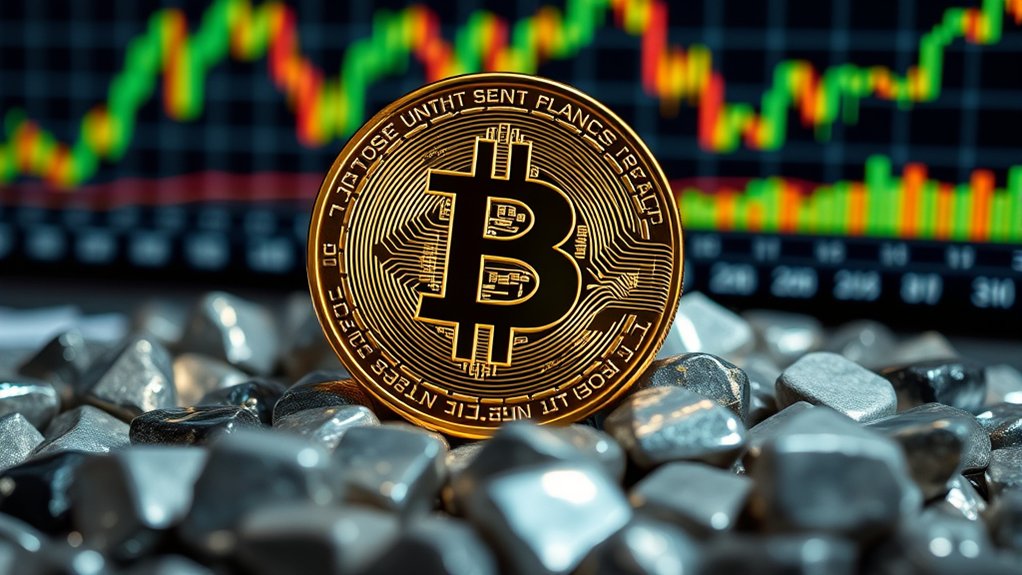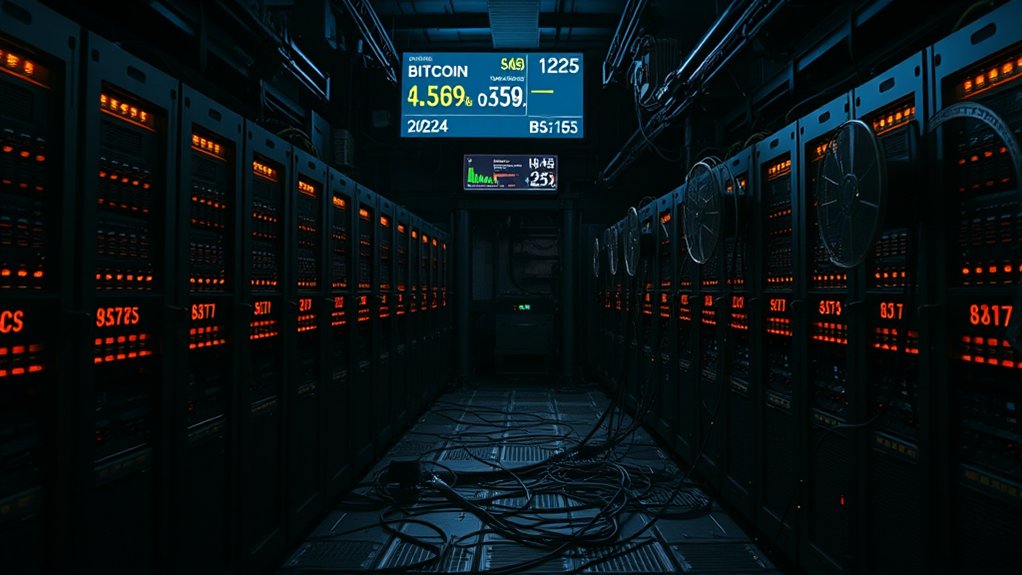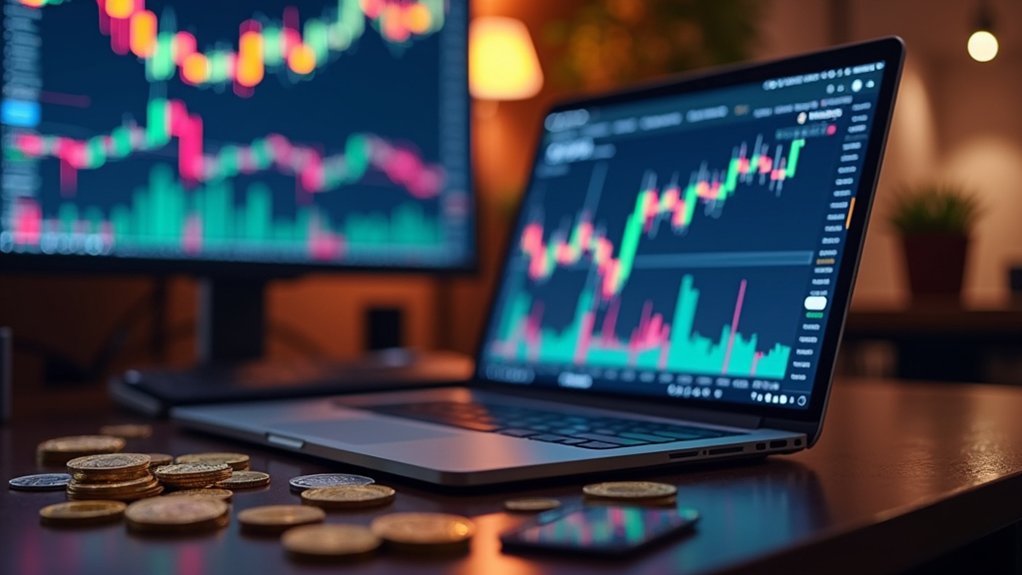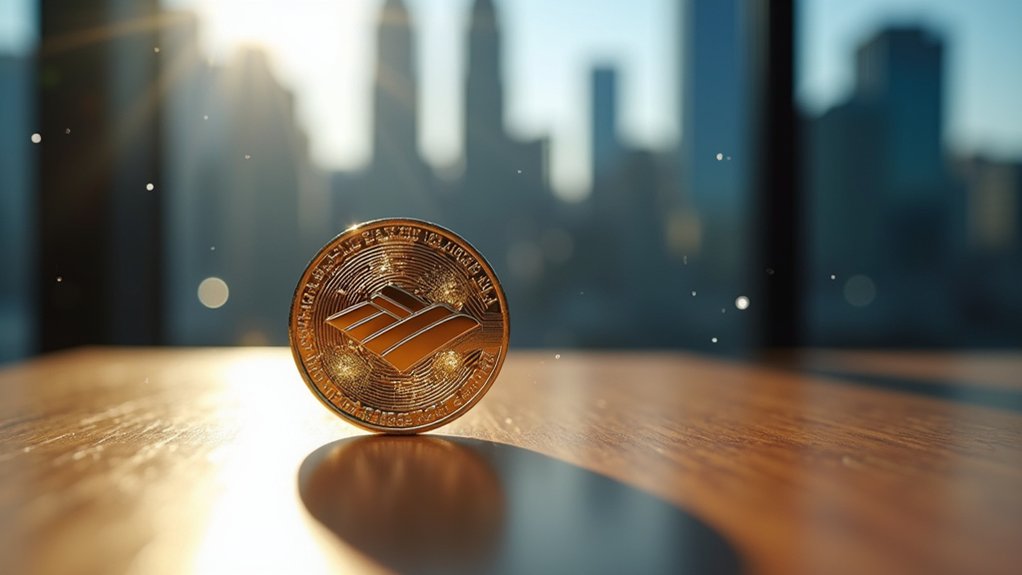Bitcoin’s value isn’t backed by anything tangible. It’s a wild mix of scarcity, demand, and market mood swings. With only 21 million Bitcoins out there, it’s hard not to feel a sense of urgency to grab some. Market sentiment? Think dramatic price swings based on tweets or news. Ever-changing regulations and big investors can make it even wilder. So, yeah, it’s unpredictable. Stick around—there’s a lot more beneath the surface.
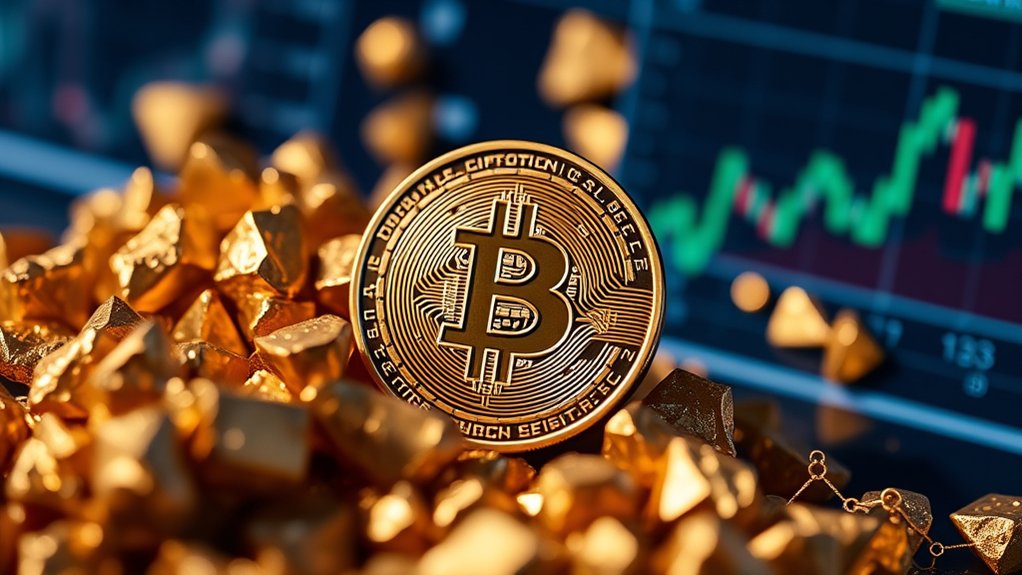
Bitcoin’s value is a wild, unpredictable ride. One moment it’s soaring to new heights, the next it’s plummeting like a rock. What backs this digital enigma? Well, for starters, there’s the limited supply. Only 21 million Bitcoins will ever exist—sounds exclusive, right? This scarcity gives it a precious-metal vibe, much like gold. But Bitcoin is no shiny nugget; it’s a decentralized powerhouse. It dodges inflation and manipulation like a pro, operating outside the clutches of central authorities.
Then, there’s the fancy blockchain technology. Secure, transparent, and downright revolutionary, it guarantees that transactions are trustworthy. Miners verify these transactions, providing a layer of integrity. They’re not just digging for digital gold; they’re the backbone of the network. Additionally, miners’ operational costs affecting their selling behavior can influence Bitcoin’s price fluctuations. The halving mechanism ensures that the maximum supply of Bitcoin remains capped at 21 million, enhancing its scarcity over time.]
And let’s not forget the halving events. Every so often, mining rewards drop, tightening the supply even further. It’s like a game of musical chairs, but with virtual coins.
Now, let’s talk economics. Supply and demand rule this chaotic world. If people want Bitcoin, its price skyrockets. If they lose interest? Well, it’s a free fall. Market sentiment plays a huge role, too. Investor emotions can swing prices like a pendulum. Economic instability can turn Bitcoin into a safe haven. It’s like running to the lifeboat when the ship’s going down—everyone wants a piece of the action.
Institutional involvement is a game-changer. Big players jumping in can send the price soaring. But wait! Regulatory changes can flip the script. One new law, and suddenly, the market’s in a tizzy.
Ultimately, Bitcoin aims to be a medium of exchange and a store of value. It’s not just a digital fad; it’s carving out its place in the financial landscape. But scalability issues? Yeah, that’s a whole other mess.
Frequently Asked Questions
How Is Bitcoin Mined and What Does It Involve?
Bitcoin mining is a wild ride. It’s all about solving complex puzzles, which sounds fancy but is really just a race to find the right hash.
Miners compile transactions into blocks and compete using high-powered machines. Oh, and expect a hefty electric bill! It’s energy-sucking work, with specialized equipment and cooling systems to keep things running.
Success means new Bitcoins and fees, but it’s a tough game where the rules change constantly.
What Factors Influence Bitcoin’s Price Fluctuations?
Bitcoin’s price swings like a pendulum on caffeine. Limited supply? Check. Demand skyrocketing? Double check.
Then there’s the speculative frenzy—everyone’s in a race to grab a piece before it’s gone. Toss in regulatory drama and news headlines that can change everything overnight, and you’ve got a recipe for chaos.
Add geopolitical tension and a sprinkle of technological upgrades, and voilà, you’ve got Bitcoin’s wild price ride. Buckle up!
Can Bitcoin Be Considered a Safe Investment?
Bitcoin as a safe investment? Well, that’s a loaded question.
Sure, it can be a wild ride. One minute it’s soaring, the next it’s plummeting. Talk about heart palpitations!
Regulatory changes? They could wipe out your gains overnight.
And don’t get started on hacks—like leaving your wallet wide open at a party.
Sure, some see it as digital gold, but remember: high risk, high reward.
Just don’t cry if it crashes.
How Do Transaction Fees Affect Bitcoin’s Value?
Transaction fees can make or break Bitcoin’s value. When demand surges, fees skyrocket—thanks, miners! Higher costs? Not great for users.
But there’s a silver lining: lower fees lately could attract more traders, boosting activity.
Still, the rollercoaster of Bitcoin’s price affects fees too, creating a wild dance of supply and demand.
What Is the Role of Bitcoin in the Global Economy?
Bitcoin’s role in the global economy? It’s a game changer, honestly.
It’s like a digital rebel, challenging traditional currencies while offering a lifeline to the unbanked. No banks, no middlemen, just pure peer-to-peer action.
Sure, the volatility can make one’s head spin, but its capped supply adds a twist of scarcity.
In a world of economic uncertainty, Bitcoin whispers, “I’m your inflation hedge.”
Who knew a bunch of code could stir such chaos?
